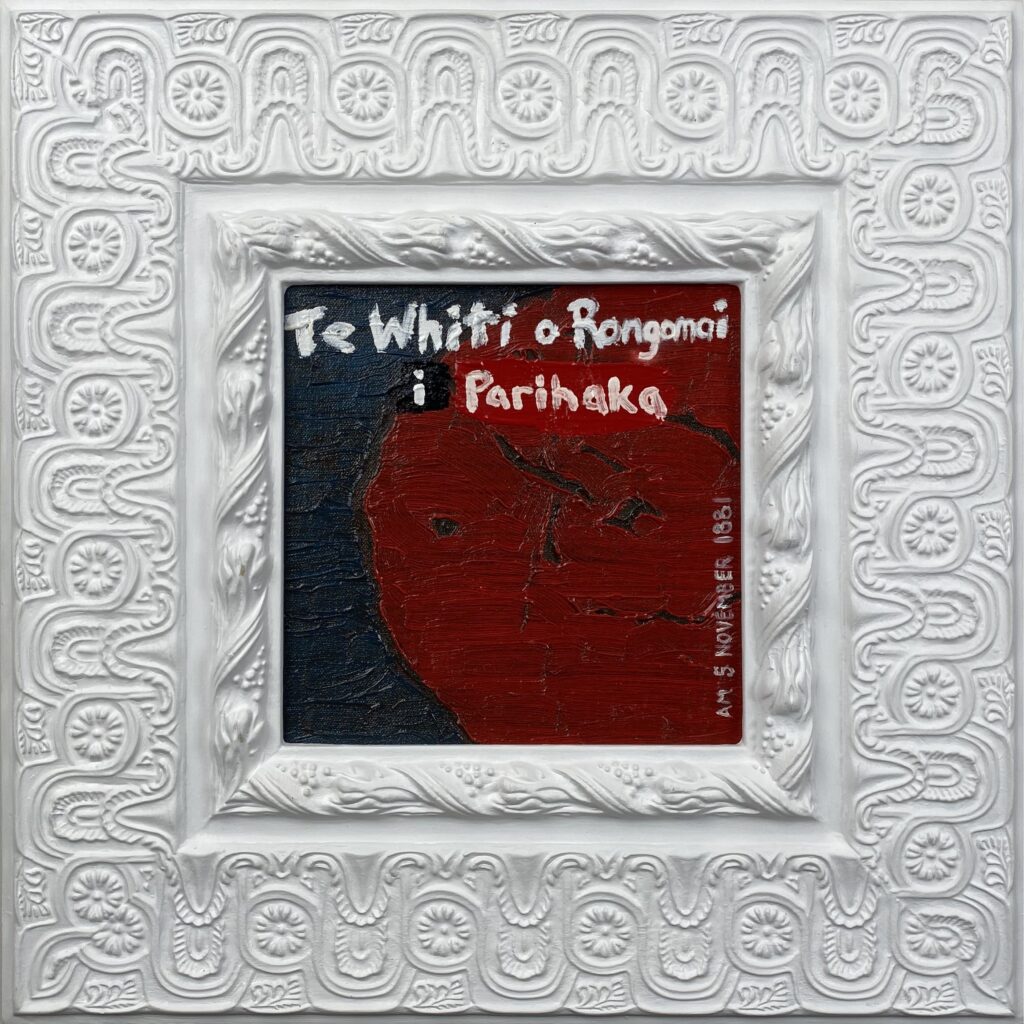21 – Te Whiti o Rongomai i Parihaka

21 – Te Whiti o Rongomai i Parihaka
Dimensions
- Painting 200x200mm
- Framed 410x410mm
- $650
Aerial View of Key Battle in the NZ Wars
Parihaka, established in the mid-1860s, became a sanctuary for Māori who had been dispossessed of their land. Te Whiti-o-Rongomai and Tohu Kākahi, both from the Taranaki and Te Āti Awa iwi, were the main leaders. In May 1879, the colonial government tried to occupy confiscated land on the Waimate Plains. Te Whiti and Tohu developed non-violent resistance tactics, and ploughmen from Parihaka spread across Taranaki to claim Māori ownership of the land. The government passed laws targeting the protesters and imprisoned hundreds of ploughmen without trial.
On 5 November 1881, around 1600 troops marched on Parihaka, which had become a symbol of peaceful resistance to the confiscation of Māori land. Native Minister John Bryce led the force, and as they arrived, several thousand Māori sat quietly on the marae while singing children welcomed them. Bryce saw Parihaka as a “headquarters of fanaticism and disaffection” and ordered the leaders’ arrest, destroyed much of the village, and forced most of its inhabitants to disperse.
This painting is part of the Ngā Puke o Aotearoa exhibition that opened at Comber Street Studios in Paddington, Sydney on 31 March 2023.
Ngā Puke o Aotearoa, The Hills of New Zealand in Māori, continued the exploration of attachment to the New Zealand landscape and was made all the more personal by the discovery of Guy’s Māori heritage during the time these works were being produced.
